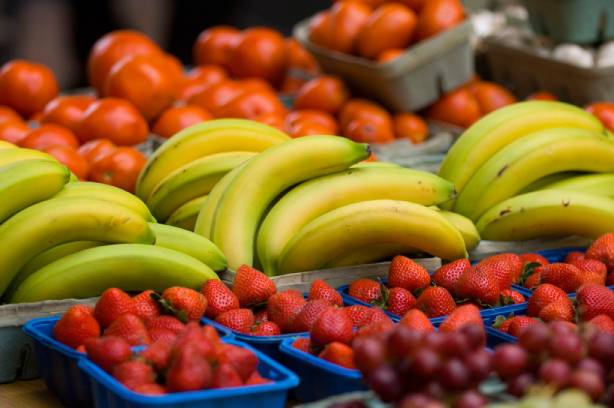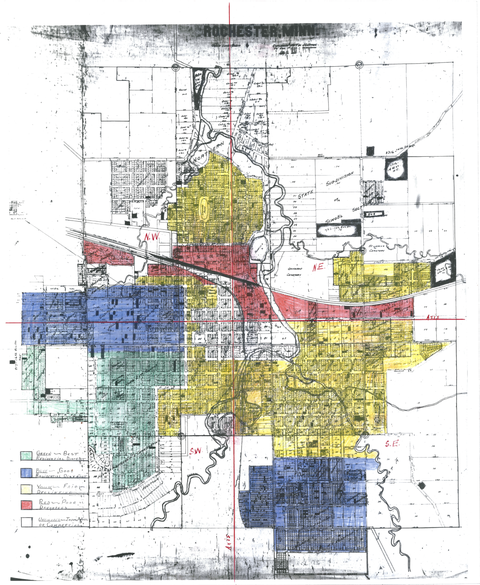When the COVID-19 pandemic hit in early 2020, it widened the already existing inequities in Olmsted County food systems.
A community left hungry is a community left hurting. Rochester City Councilor and University of Minnesota Extension Southeast Regional Sustainable Development Partnership (Southeast RSDP) workgroup member Kelly Rae Kirkpatrick says she has seen this issue and the resulting impact in parts of Olmsted County.
“The ripple effect is huge,” said Kirkpatrick.
“We’ve got youth who don't have enough calories to sustain brain power to get educated properly in our school system. We’ve got such high rents that people have to choose rental payments over purchasing healthier food. That leads to a lack of nutrition, then fast forward to health issues in the future. Plus, we don't have neighborhood grocery stores anymore exacerbating food access; all of those have kind of gone by the wayside. … So the impact on food security is across all spectrums.”
A new report, The Olmsted County Food Security Assessment, uses data from sources such as the U.S. Census Bureau to provide a snapshot of food insecurity in the county as it relates to race, equity, location, land access, life expectancy, transportation, regional history and other factors. University of Minnesota Humphrey School of Public Affairs graduate student Mathew Gabb developed the assessment under the guidance of Councilwoman Kirkpatrick, local community partners and a project advisory panel, in partnership with the Southeast RSDP.
The results have exposed a severe situation in certain communities within Olmsted County but have also illuminated a new avenue forward.
“This study is powerful in the way it captures the real-world impacts of deep, systemic inequalities in one of the wealthiest counties in Minnesota,” said Andi Sutton, Southeast RSDP Executive Director. “While the story of inequality that the report tells is stark, it also contains a large number of exciting, actionable solutions. This combination makes it a useful tool for building a more equitable and food-secure future.”
Olmsted County 2021 Food Security Assessment key findings
- Food insecurity is not felt equally. Nationally, 1 in 12 white individuals are food insecure compared to 1 in 5 Black individuals. Systemic racism must be addressed to bring equity into the food system.
- There is a 24-year gap in life expectancy when comparing residents of different neighborhoods across the county. One's health can be heavily influenced by where they live and what they have access to.
- Transportation matters. Revisiting structures such as bus routes can have a major impact on an individual's access to food.
- The number one recommendation from the assessment was to create a county-wide food security coalition. A coalition allows food providers, government, schools and community members to coordinate, fully utilize resources and meet gaps identified by the data.
Overlapping roadblocks
In the years leading up to the assessment, community organizations across Olmsted County struggled to find solutions to food insecurity in the community. Kirkpatrick recalls her involvement in a 2019 project aimed at getting fresh vegetables into the hands of locals. Despite ample philanthropic support, the project lacked sustenance and eventually fell apart.
“We just weren’t progressing on how we were going to make it happen—how we would reach the most people with programming,” said Kirkpatrick.
Other organizers say they experienced similar obstacles. Despite an array of services working to nourish the community, providers often stumbled upon gaps in data necessary to understanding the needs of Olmsted County people experiencing food insecurity. Without clear information and priorities, efforts often became disjointed.
“I think I remember saying something like, ‘Oh my gosh, we're not going to gain any traction until we get a good picture of what's going on in Olmsted County,’” Kirkpatrick said.
A path for change
In order to more effectively navigate food security in Olmsted County, local providers knew they needed to map out the larger picture. In 2019, a group of community leaders and their organizations combined forces. With partnership support from the Southeast RSDP, a food security assessment was completed in collaboration with individuals from Channel One Regional Food Bank, Rochester Public Library, the City of Rochester and Olmsted County Public Health.
According to student researcher Matthew Gabb, providers have already seen how the new information has empowered progress in the community’s journey, especially when it comes to understanding the nuances of issues impacting food insecurity.
“I was recently presenting the report to a community group, and when I highlighted the history of redlining in the region, I received pushback from some of the audience about why the assessment touched on racism," said Gabb. “We know that neighborhoods in Rochester that experienced redlining are, today, more likely to be food deserts and home to folks experiencing food insecurity. Since I had the statistics from the assessment, I was able to respond with the data that demonstrated this inequity.”
According to Gabb, the data changed the course of the conversation. “People who might not want to see that human aspect of it started to open up and realize, ‘Yes, this is important, and we should be talking about it.’”
Conversations are just the beginning. In 2021, the Olmsted County Food Security Coalition was created. Consisting of partners and community members, the group meets regularly and uses the assessment findings as a launching point for next steps.
“The assessment considers all these factors going on across the county. Now we can pinpoint important details to address as we move forward in helping to make our food system more secure and benefit the whole of the community,” said Kirkpatrick. “It’s an important steppingstone forward.”






